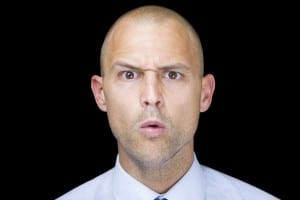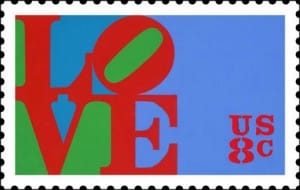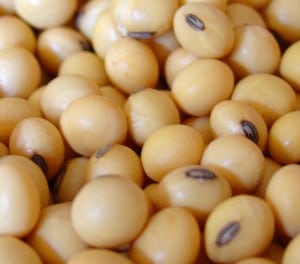Today’s post is by Guest Barista Jay Pattumudi, a Patent Attorney with Bruzga and Associates.
Under the new U.S. patent reform act, America Invents Act (AIA), the scope of prior art for making novelty and obviousness determinations has been broadened in some aspects but, in some cases, has been narrowed. With regard to making such determinations, the act’s provisions took effect March 16, 2013. This article makes a comparison of the provisions of AIA with those of European (i.e., EPO) and Japanese (i.e., JPO) patent law in the following two tables, which will be discussed below.
The following table entitled “Five main categories of prior art by others under AIA and a Comparison” (hereinafter, the “first table”) highlights the five categories of prior art by others than the inventor and compares their applicability with treatment under corresponding European and Japanese jurisdictions (referred in the table as EPO and JPO respectively). As shown in the first table, an inventor, subject to important exceptions for his or her own actions[1], is barred from obtaining a patent if his or claimed invention was (1) patented by others; (2) described in a printed publication by others; (3) in public use by others; (4) on sale by others; or (5) otherwise available to the public before the effective filing date of his or her claimed invention.
The effective filing date is the actual filing date of a patent or a patent application, or an earlier date where the patent or patent application claims priority to an earlier application (such as right of priority under (1) section 119 (e.g., Paris Convention priority), (2) section 365(a),[2] or (3) section 365(b)[3] or the benefit of an earlier filing date under (1) section 120 (e.g., continuation application or continuation-in-part application), (2) section 121 (i.e., divisional application) or (3) section 365[c]).[4] With respect to claiming priority to an earlier application, the earlier application must provide “continuity of disclosure” in that the earlier application must comply with 35 U.S.C. § 112; the earlier application must describe the claimed invention as well as enable a person to make and use the claimed invention. The “otherwise available to the public” is a new category under American patent law but analogous counterparts were already recognized in EPO and JPO.
Five main categories of prior art by others under AIA and a Comparison
|
|
Patents |
Publications
|
Public use
|
Sale |
Catch-all provision |
|
U.S.
|
Patents prior to effective filing date of claimed invention are a bar.[5] §102(a)(1) |
Printed publications that disclose the claimed invention and prior to effective filing date of claimed invention are a bar. §102(a)(1); see following second table for discussion of published patent applications. |
Public use of the claimed invention prior to effective filing date of claimed invention is a bar. §102(a)(1) |
Sale of the claimed invention prior to effective filing date of claimed invention is a bar. §102(a)(1) |
If the claimed invention is otherwise available to the public prior to effective filing date of claimed invention, such occurrence is a novelty bar. §102(a)(1) |
|
EPO
|
Yes.[6] |
Yes.[7] |
Yes.[8] |
Yes, under general catch-all provision.[9] |
Yes.[10] |
|
JPO
|
Yes.[11] |
Yes.[12] |
Yes.[13] |
Generally yes.[14] |
Yes.[15] |
The following table “Earlier-filed later-published patent applications of others” (hereinafter the “second table”) focuses on a separate sub-category of prior art printed publications. The second table focuses on the prior art applicability of earlier-filed applications by others which become prior art when they become published. The earlier-filed later-published application of others, unlike other prior art, could not be discovered by an inventor because it was not published at the time an inventor had filed his or her own patent application. The second table compares the applicability of such earlier-filed application as prior art with those of corresponding European and Japanese jurisdictions. Thus, under U.S. patent law, an inventor, subject to important exceptions for his or her own actions, is barred from obtaining a patent if the claimed invention was described in another inventor’s published patent application which was filed before the effective filing date of the claimed invention.
Earlier-Filed Later-Published Patent Applications of Others As Prior Art Bars
|
|
Novelty
|
Obviousness
|
|
U.S.
|
Yes. An earlier-filed application of another, from any country is prior art from earliest effective filing date of claimed invention, provided that the application is subsequently published. 35 U.S.C. §102(a)(2) |
Yes. Same standard as for novelty. |
|
EPO
|
Yes, provided that the EPO application is published on or after the filing date of the later-filed application.[16]Article 54 |
No. |
|
JPO
|
Yes.[17] |
No. |
However, AIA recognizes an exception for this separate sub-category of prior art. For example, earlier-filed later-published applications having a common inventor or common assignee are not considered to be prior art. However, double patenting issues may arise. JPO has a similar exception regarding prior art applicability of earlier applications having a common assignee. EPO, unlike JPO and the U.S., does not have such an exception.[18]
Summary of Main Points
We will now discuss several key points that can be gathered from the foregoing tables. Although many of AIA’s provisions are conforming to aspects of EPO and JPO patent law, AIA has some importance differences.
Point #1: Earliest effective filing date of a patent application is an important criterion for determining prior scope.
The effective filing date of a patent application by another inventor is now a key criterion for determining the scope of prior art. The effective filing date is the actual filing date of a patent or a patent application, or an earlier date where the patent or patent application claims priority to an earlier application, as further detailed previously.
Thus, only the effective filing date determines the applicability of a prior art reference. Accordingly, under U.S. patent law, a Rule 131 affidavit, which was used in order to provide evidence that than applicant had an earlier invention date, can no longer be used. However, one should nevertheless retain evidence such as lab notebooks for use in derivation proceedings which concern whether an individual derives the claimed invention from the true inventor.
Point #2: Public use and sale of the claimed invention are now novelty-destroying prior art regardless of where they occurred.
As shown in the first table, public use and public sale, under the AIA, anywhere in the world, acts as a novelty bar. Thus, another inventor who sells, offers to a sell an invention or uses the invention anywhere in the world can create novelty-destroying prior art. Previously under older U.S. patent law, acts of public use and public sale by another inventor were novelty-destroying only if such activities occurred in the United States.[19] Inventors, however, could use their own activities, such as sale or use of the invention outside the U.S., such as in countries bound by NAFTA and WTO regulations, in order to establish an earlier date of invention. Id. Accordingly, AIA now treats such acts of public use and sale as novelty-destroying in the same way as European and Japanese patent law.
Point #3: Patent application of another inventor creates novelty and obviousness bars from the earliest effective filing date, regardless of whether the language of filing is in English.
As shown in the second table, a prior application by another inventor (i.e., earlier-filed later-published applications) can be used for novelty and obviousness bars against later-filed applications.
Concerning this category of earlier-filed later-published applications, AIA makes no distinction between a U.S. patent application claiming priority to an earlier foreign patent application and a U.S. patent application claiming priority to an earlier domestic patent application, where both of them become published patent applications for purposes of being applicable prior art. Under section 102(e) of the old U.S. patent law, a published U.S. application that claimed priority to a non-English language application, such as a Japanese application, was prior art as of its U.S. filing date because the earlier application was not filed in an English language.
Now, under AIA, any earlier-filed U.S. patent application of another inventor, is prior art as of its earliest effective filing date, regardless of whether the earliest application was filed in the English language. Thus, such a U.S. patent application, irrespective of whether the priority application was filed in a non-English language,[20] can now be used for both novelty and obviousness determinations against patent applications of other inventors. Comparisons with Europe and Japan are further discussed below.
Point #4: Earlier-filed applications under AIA can be used for both novelty and obviousness determinations unlike Europe and Japan.
As shown in the second table, an earlier-filed application by another inventor, provided that the application was subsequently published, can be used as prior art for both novelty and obviousness applications.
An earlier-filed application under European patent law, can be used as prior art for novelty purposes only and under certain conditions. First, under EPC Article 54(3), the earlier application must be a European national application that is a novelty-destroying prior art from earliest effective filing date provided that the application by the other inventor was published on or after the filing date of the later application of the inventor.[21] However, non-European patent applications cannot be used for novelty purposes; a European national phase of a PCT application is considered prior art under EPC Article 54(3) provided that the international application, accompanied by a national fee, is filed in an official language of the EPO.[22] Yet even the scope of the European national application is limited; the European patent application under EPC Article 56 cannot be used as prior art for obviousness purposes. Under AIA, WIPO publication of a PCT international application, by virtue of designating the U.S., is prior art from earliest effective filing date.[23]
A Japanese patent application by another inventor is prior art from the earliest effective date (regardless of country of origin) but, can only be applicable prior art for novelty but not for obviousness.[24] In addition, Japanese patent law, like the AIA, recognizes the inapplicability of earlier-filed applications having a common inventor or a common assignee).[25] Thus, Japanese patent law, unlike AIA or European patent law, will only consider prior art applicability to an earlier-filed later-published application by another inventor if it is within the category of all prior art publicly available to an inventor at the time of filing his or her patent application.
Accordingly, under AIA, the scope of prior art with respect to the applicability of earlier-filed, later-published application by others is greater than those of Europe or Japan because they can be used for both novelty and obviousness rejections. Thus, a European or a Japanese patent application that did not encounter such rejections could still face them in the United States.
Point #5: Inventors still have protections for their own actions under AIA.
The United States Patent and Trademark Office recently published new rules regarding inventor’s exceptions for their own actions and related matters. Some generalizations can be made. For example, actions by an inventor, if such actions were done a year or less before the effective filing date of the claimed invention, are not prior art against the inventor.[26] A journal article, which was published less than a year before the filing of a patent application, is one such example. Important exceptions for prior art also include earlier-filed later-published applications having a common inventor or common assignee and filed before the effective filing date of the second patent application.[27]
However, inventors should be wary of what disclosures that they publish before they file a patent application as well as should be concerned about intervening third-party disclosures. For example, an inventor’s second, intervening grace period disclosure of a new feature or a more specific description of subject matter previously disclosed (e.g., a later disclosure of a species vs. an initial disclosure of a genus) is applicable prior art against the patent application filed within one year from the inventor’s first disclosure.[28] Intervening third-party disclosures published during the one year grace period generally are applicable prior art and thus do not count towards the grace period; such third-party disclosures are disqualified only if the inventor’s earlier public disclosure disclosed as much of the subject matter as was disclosed in the third party disclosure.[29] Nevertheless, because most of the world utilizes a first to file system, prudent inventors would still be advised to file a patent application before publishing a journal article, for example.
Conclusion
Inventors and corporate executives alike should consider the following points: (1) five categories of prior art are to be considered for prior art analysis; (2) the earliest effective filing date of a patent or a patent application by others is the key criterion for prior art applicability but keeping evidence is still important in certain situations such as derivation disputes; (3) public use and sale are potential novelty-bars, irrespective of geographic location; (4) a published U.S. patent application claiming priority to an earliest effective filing date, can be used for novelty and obviousness bars, regardless of whether the earlier priority application was filed in an English language; and (5) inventors still have a one-year grace period for filing a patent application, but keep in mind that such a grace period is only applicable to filings in the United States, and that even certain types of inventors’ disclosures can be applicable prior art.
Note: This commentary does not represent legal advice and is merely a summary of general points about the scope of prior art in various jurisdictions. Comments on this article are appreciated. Should you have any questions, please contact the author at jpattumudi@aboutiplaw.com.
[1] We will briefly discuss exceptions for an inventor’s own prior art later.
[2] For example, a national application is entitled to right of priority based on an international application designating at least one country other than the United States.
[3] For example, an international application designating the U.S. is entitled to a right of priority based on a prior foreign application, or a prior international application designating at least one country other than the U.S.
[4] For example, an international application designating the U.S. is entitled to benefit of filing date of a prior national application or an international application designating the United States, and a national application shall be entitled to the benefit of the filing date of a prior international application designating the United States.
[5] The effective filing date is the actual filing date of a patent or a patent application, or an earlier date when the patent or patent application claims priority to an earlier application.
[6] Covered generally; everything made available to the public by means of a written or oral description before the date of filing of the European patent application constitutes a novelty bar. EPC Article 54(2).
[7] Covered under the category previously described for patents; see also second table.
[8] Everything made available to the public by use and before the date of the filing of the European patent application constitutes a novelty bar. EPC Article 54(2); see endnote 9 for further info.
[9] Not specific; sale is covered by the catch-all provision under EPC Article 54(2); our European patent counsel, Manuel Schockmel of Dennemeyer and Associates, has kindly provided us with the following information: a mere sale or use of the invention can be a novelty-destroying event provided that it is available to the public without any bar of confidentiality restricting use or dissemination of the invention; this holds true even where the features of the invention are not readily ascertained from external examination (e.g., visual examination of the invention) but would require further analysis.
[10] Everything made available to the public in any other way and before the date of the filing of the European patent application constitutes a novelty bar. See EPC Article 54(2).
[11] Covered generally; inventions that were described in a distributed publication in Japan or a foreign country, prior to the filing of a patent application, constitute a novelty bar. See Article 29(iii) of the Patent Act of Japan.
[12] Covered under the category previously described for patents; see also specific table for discussion of published patent applications.
[13] Inventions that were publicly worked in Japan or a foreign country, prior to the filing of a patent application, constitute a novelty bar. See Article 29(ii) of the Patent Act of Japan; see also endnote 14 for further detail and information.
[14] Inventions that were publicly worked in Japan or a foreign country, prior to the filing of a patent application, constitute a novelty bar. See Article 29(ii) of the Patent Act of Japan. The mere public use and the mere sale of an invention are novelty-destroying events against others. However, this presumption is rebuttable. For example, Japanese civil procedure allows a person to challenge the general presumption that the prior use and sale are novelty bars if the features of the invention are not readily ascertainable to others through external examination or further analysis of the sold invention. Rieko Yamazaki, a colleague at the firm provided the foregoing advice.
[15] Inventions that were publicly known in Japan or a foreign country, prior to the filing of a patent application, constitute a novelty bar. See Article 29(i) of the Patent Act of Japan.
[16] General standard for prior art criteria applies; an earlier-filed EPO application of another, is prior art against a later-filed application provided that the EPO application was published prior to the filing date of a later application. See EPC Articles 54 and 56.
[17] Articles 29(1) and 29(2) of the Patent Act of Japan.
[18] EPC Article 54(3); contrast with Article 29bis of Patent Act of Japan
[20] An earlier-filed U.S. patent application of another is applicable prior art from earliest effective filing date provided that the application is subsequently published.
[21] For purposes of this article, we use the term “earliest effective filing date,” to be consistent with US AIA language. For example, EPC Article 87 allows a “right of priority” for a later-filed application within twelve months from the date of filing of the first application.
[22] EPC Article 158(2); AIA appears to be broader than EPC patent law because a published PCT application is that designated the U.S. is considered prior art from earliest effective filing date, even if the PCT application has not entered the U.S. national phase.
[23] 78 Fed. Register 11059, 11063 (February 14, 2013).
[24] Articles 29(1), 29(2) and 39 of Patent Act of Japan
[25] Article 29bis of Patent Act of Japan
[26] See 35 U.S.C. § 102(b)(1)(A)-(B); in addition to actions by an inventor, actions by a joint inventor, or by another who obtained the subject matter disclosed directly or indirectly from the inventor or joint inventor, are also to be considered for prior art exceptions.
[27] See 35 U.S.C. § 102(2)(C); under certain circumstances, applications having a common inventor or a common assignee, are not prior art.
[28] 78 Fed. Register 11059, 11077 (February 14, 2013).
[29] Id., citing 78 Fed. Register 11067.





